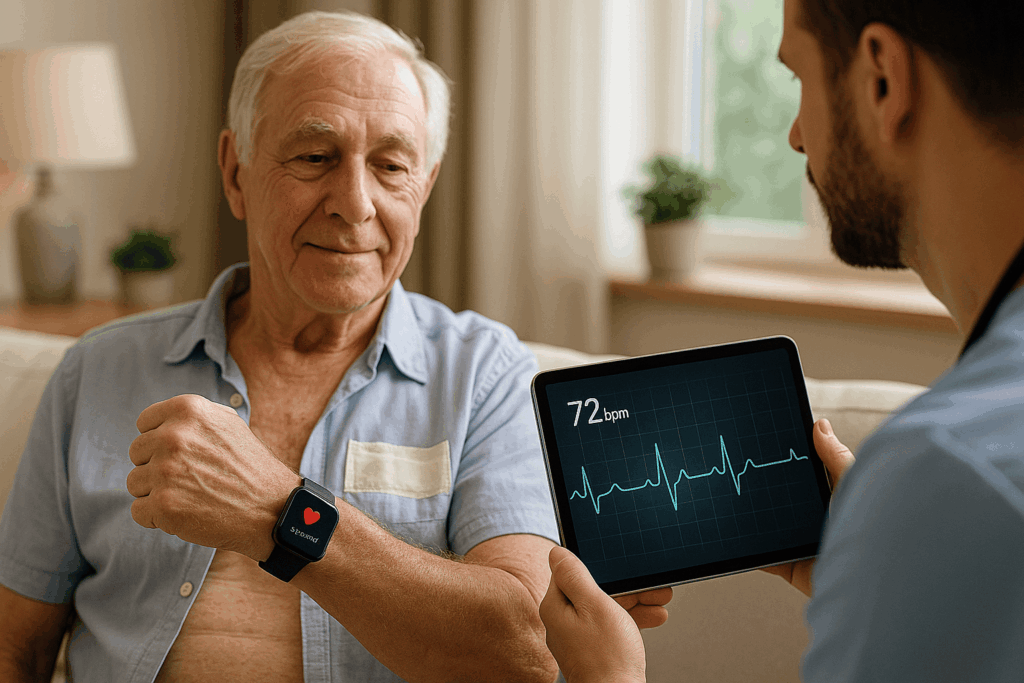
Wearables and post-surgery: smart monitoring for patient recovery
Wearables and the postoperative phase: the evolution of clinical monitoring
The use of wearable devices, also known as wearables, is rapidly evolving from fitness to the realm of clinical healthcare. Their application in adult postoperative settings is opening up new possibilities for the remote management of patients.
Thanks to their ability to collect real-time biometric data, such as heart rate, heart rate variability (HRV), sleep, and activity level, these tools are becoming essential allies for doctors and nurses in evaluating postoperative recovery, especially during the first days after discharge.
According to a recent review published in the European Journal of Cardiovascular Nursing, wearable technology can provide meaningful insights into the physical recovery of adult patients who have undergone heart surgery, improving not only care but also reducing the risk of complications.
Activity tracking: predictive and personalized data
Integrated accelerometers in wearable devices are capable of providing an accurate and continuous picture of a patient’s daily physical activity. The review in question, focused on adults undergoing cardiovascular procedures (such as coronary artery bypass grafting or valve replacements), highlights that below-average levels of physical activity are associated with a higher incidence of hospital readmissions within 30 days after discharge.
This data, which is typically not captured through traditional methods, can be used to adjust the recovery plan, intervene early in case of deterioration, or even predict critical issues before they manifest clinically. It’s not just about tracking movement, but about building a predictive map of the patient’s health trajectory, day by day.
Continuous monitoring: clinical benefits and patient comfort
Traditionally, postoperative monitoring relied on scheduled outpatient visits and subjective reports from the patient. The introduction of wearables now enables continuous, objective, and non-invasive surveillance.
Clinicians can receive alerts if the data shows anomalies, while the patient experiences the recovery phase in their home environment, with lower stress levels and a greater sense of security. This approach improves adherence to the treatment plan, helps reduce hospital stay duration, and can decrease the number of follow-up visits, optimizing the use of healthcare resources. The impact is tangible both in terms of patient experience and system efficiency.
Challenges ahead: reliability, interoperability, and personalization
Despite the benefits, the clinical use of wearables is not without challenges. A key concern is the reliability of the collected data, which can vary depending on the device and the user’s adherence to correct usage. Additionally, there is the issue of data standardization, often inconsistent across different manufacturers, and its integration with existing clinical systems, such as electronic health records.
The personalization of alerts is another delicate aspect: if they are too sensitive, they generate false alarms; if too rigid, important signals may be missed. To achieve the greatest clinical impact, it is essential to develop robust, well-trained predictive models based on large samples and real clinical data.
System-wide benefits: impact on the healthcare service and care model
From an organizational perspective, the adoption of wearables in the postoperative phase can lead to a reduction in healthcare costs, thanks to the prevention of complications and the streamlining of outpatient visits.
Beyond tracking: future directions, AI, and proactive medicine
The future evolution of wearables goes beyond simple tracking. Through integration with artificial intelligence, the data collected can be processed to generate personalized predictions on recovery progress, suggest therapies, or even guide early intervention by healthcare professionals.
We are moving toward a model of proactive and predictive medicine, where remote monitoring is not just a form of support but becomes an integral part of the clinical decision-making process.
